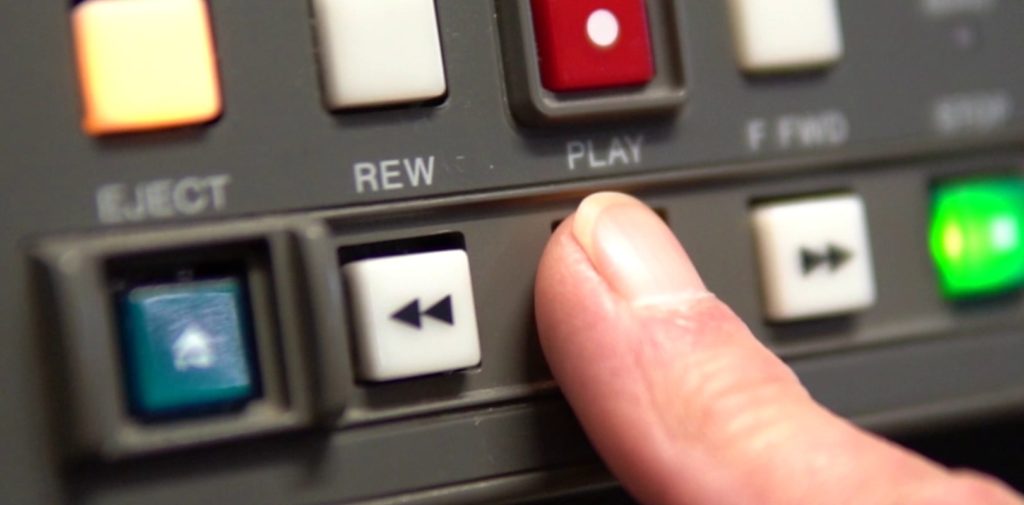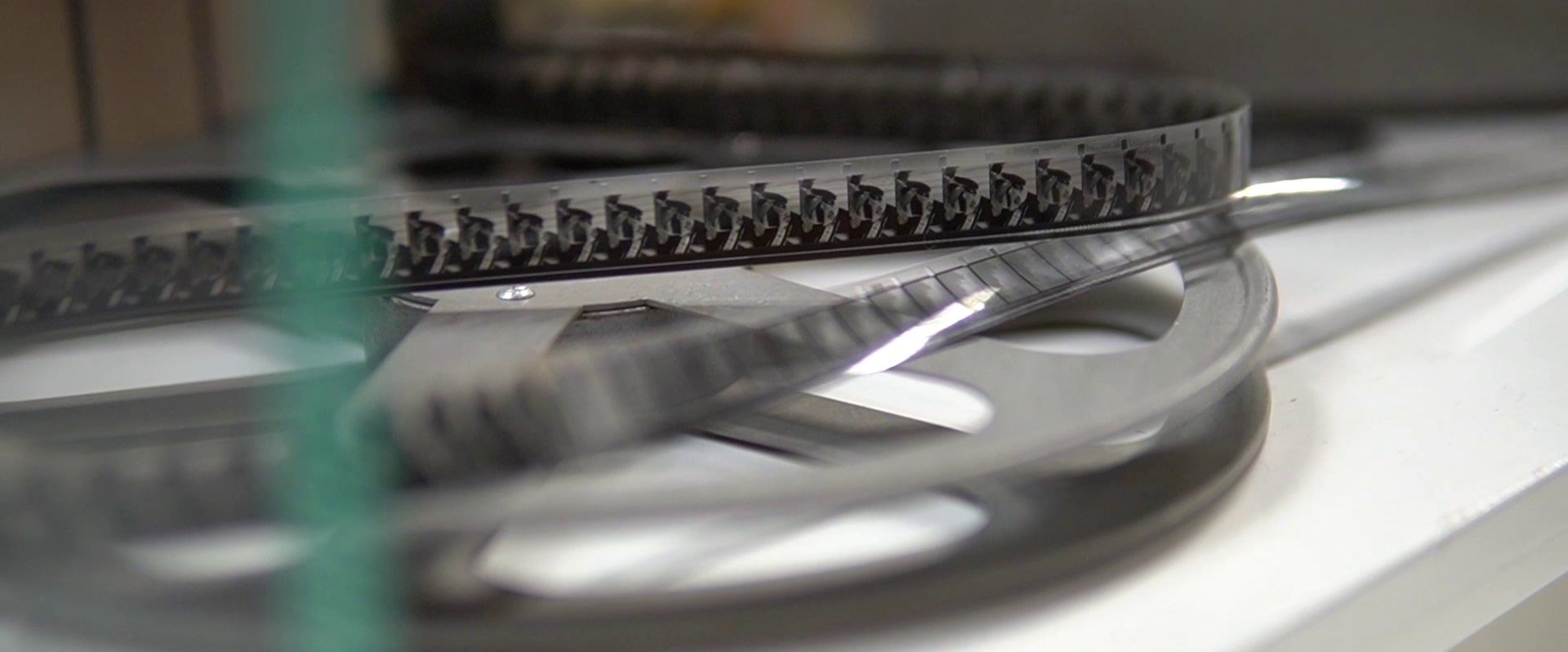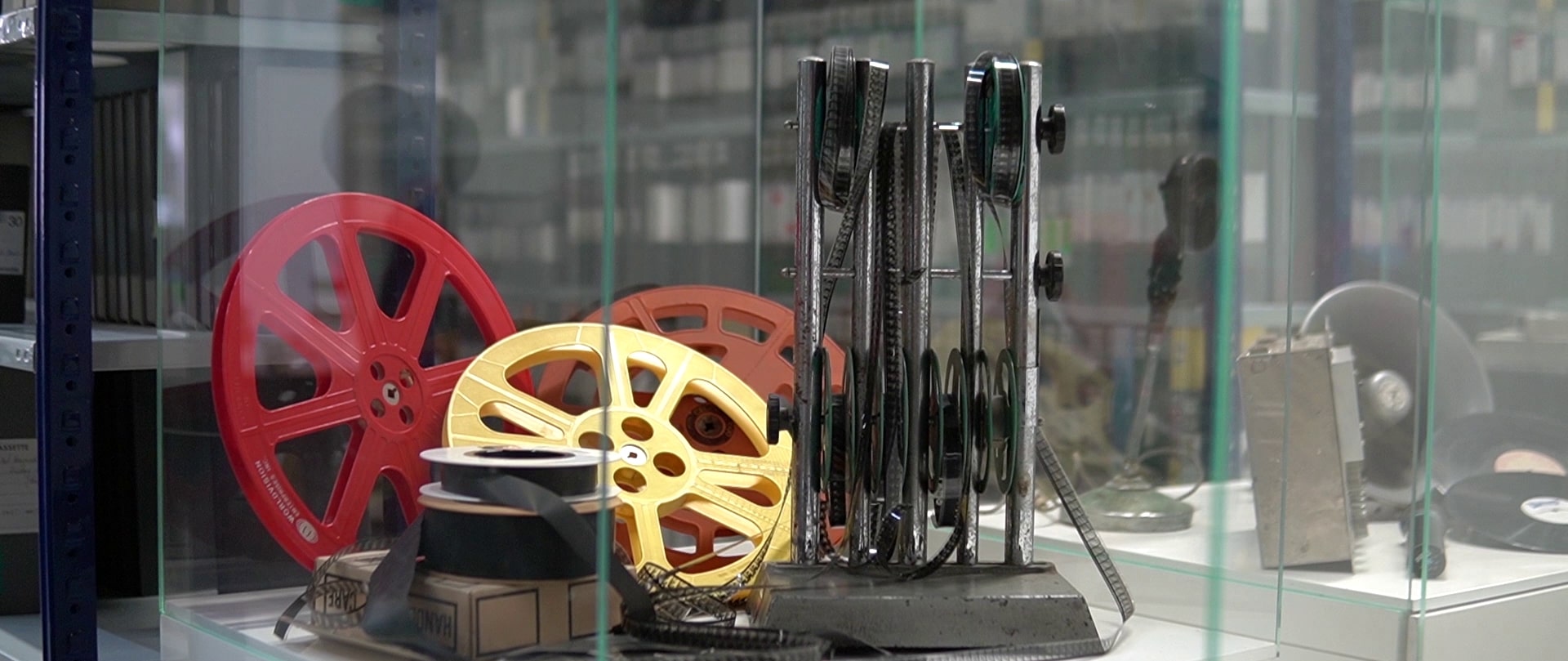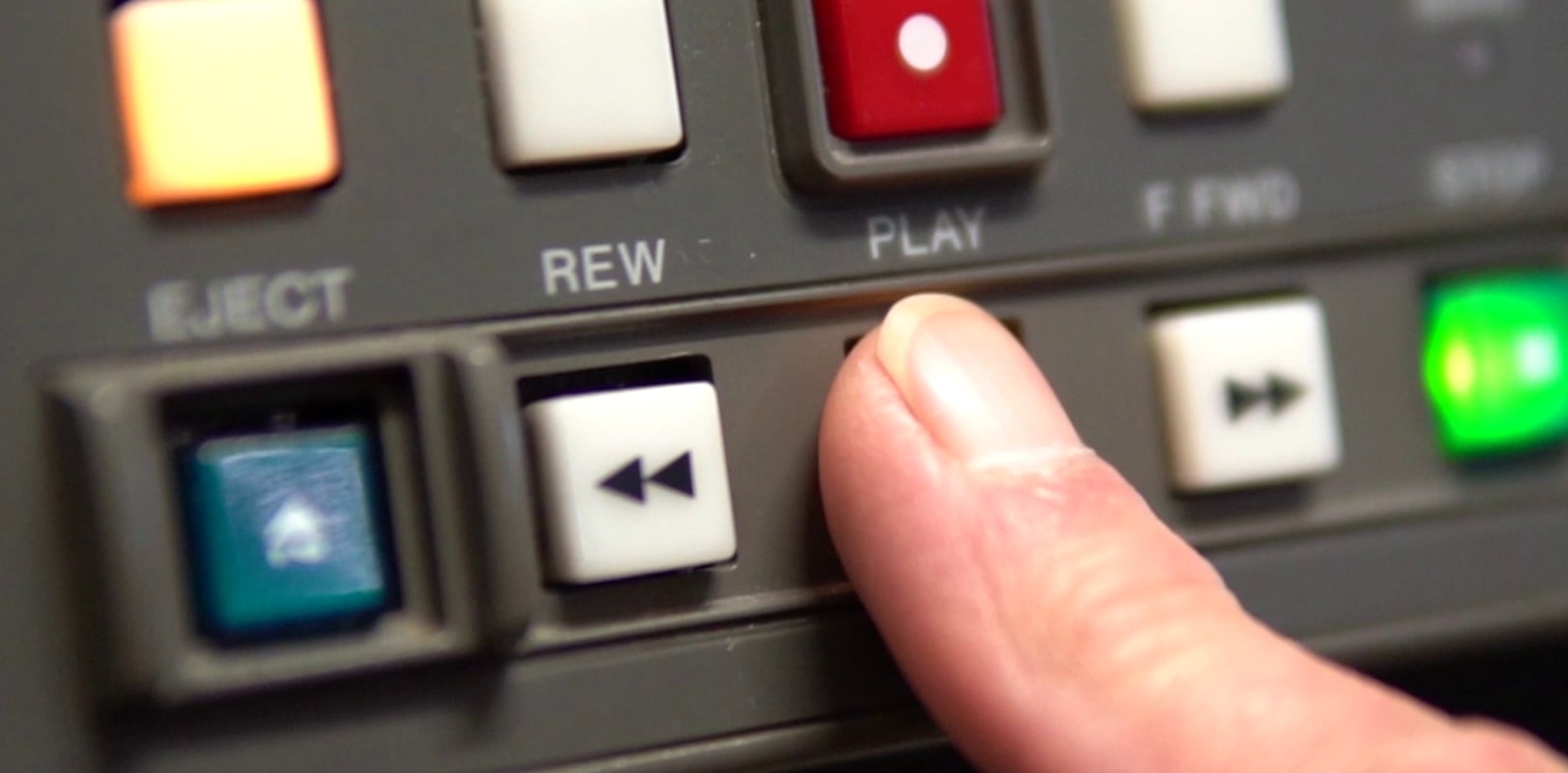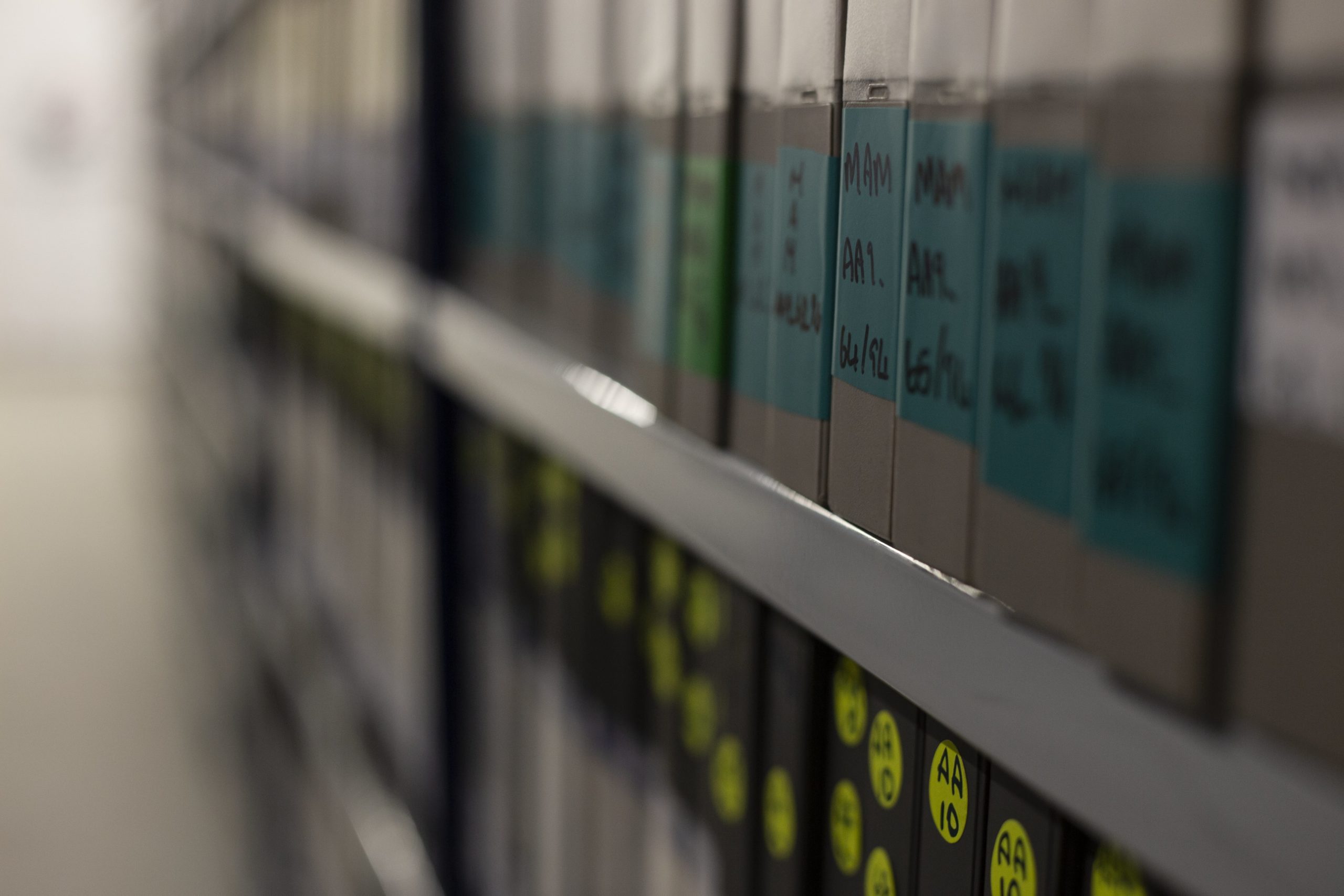Film digitisation requires specialised equipment that is operated by trained personnel, who ensure the integrity of the original material and the quality of the digitally converted output. The team at MAVM uses different kinds of machinery in its daily work to digitise hundreds of hours of physical media each week.
1. Cleaning of tapes
The first piece of equipment is designed to delicately remove dust, grime, and other particles from the surface of tapes. The presence of these artefacts could otherwise hamper proper playback of the material but, thanks to this machine, tapes can be quickly wiped clean of dirt without damaging them.
2. Playback machines
After a tape has been checked for any damage and cleaned, it is loaded onto the appropriate playback machine by the ingest operators, and the content converted to digital format. In the PBS archives, there is a variety of playback machines that allow technicians to play multiple types of physical media simultaneously.
3. Footage conversion stations
Each playback machine is connected to a footage conversation station: a computer that has special software installed which captures and records content from physical media, and saves it as a digital file on a server.
4. Editing equipment
Video editors can access the converted footage from the server onto their personal workstations. At this point, the footage is still “raw”, containing various glitches like black frames, colour degradation, and other defects. Editors split up the footage into smaller segments and correct anomalies in the picture. The edited clips are then passed to an audio editor who restores the sound.
5. Media server
The finished video clips are uploaded onto a central media server. Metadata editors review these files and include historical background details (metadata) which identifies the people, places and events seen in the footage. This information makes it easier to search for particular clips using keywords.
At any given time, MAVM professionals using this equipment will be handling footage at different stages of the digitisation process. The output of each machine feeds into the next piece of equipment in the same order above; this enables work to proceed at a steady pace and ensures that the equipment is being used efficiently.

